Scout helps preservation group restore slave cemetery in Mahwah
MAHWAH — A slave cemetery discovered 10 years ago off Ramapo Valley Road has finally been restored and a commemorative plaque installed thanks to the combined efforts of the Mahwah Historic Preservation Commission and Boy Scout Peter Kaya Gretchikha.
The 40-by-100-foot plot near Ramapo College was first uncovered by former adjunct professor Jeff Williamson and a team of students in December 2012. Some work was done cleaning the site and repairing damaged gravestones. But Williamson needed financial assistance to continue the work and turned his attention to researching the gravesite's history.
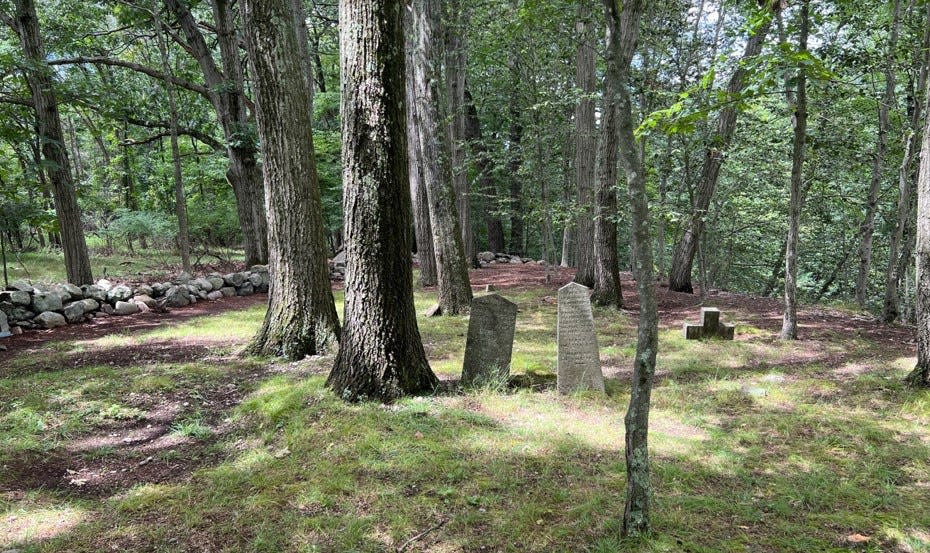
The cemetery needed lots of work
"The commission was in close contact with Williamson during the last year as we planned the renovation," said Chair Anne Powley. "With his help, language for the plaque was finalized, and it is now installed, so that anyone who finds themselves in this sacred space will know its history."
The plaque reads: "We hereby honor those whose names and stories have been lost. Buried here are those who were Black slaves, freedmen and workers of the 1700s-1800s. The back area is assumed to be the burial site of slaves or freedmen buried without markers. Those buried here were most likely of Afro-Dutch and possibly Ramapough Indian descent. Mahwah Historic Preservation Commission 2023."
History of the cemetery
The cemetery is believed to have belonged to the Hopper family, which owned the adjacent house and property in the late 1700s and early 1800s. The family portion closer to the house contains engraved stones and obelisk monuments. The slave portion contains 25 to 30 small, unmarked, rough-cut stones that indicate burial sites.
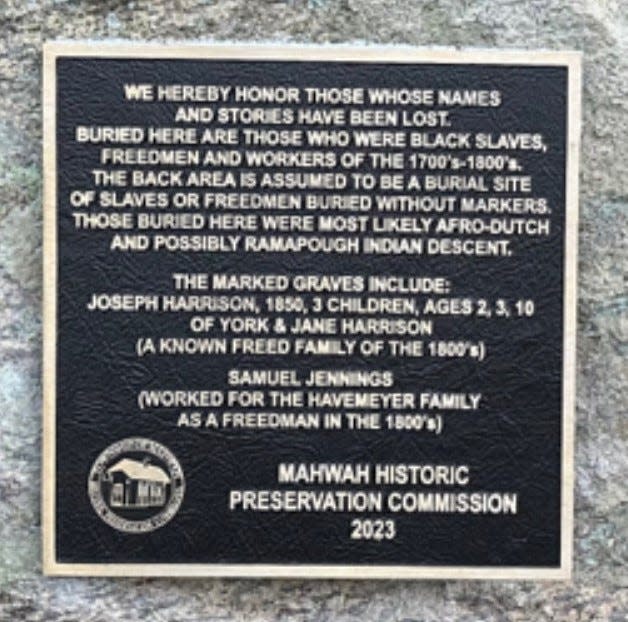
Only three stones survive in the slave cemetery from the mid- to late 1800s. Two are engraved slabs for the Harrison family, relatives of Hopper slave Samuel Jennings, whose grave is marked with a marble cross.
The cemetery needed clearing of decades of overgrown brush, as well as resetting sections of the rock border wall and documenting the site, Powley said.
"Just as we were going to post for volunteers, Peter came to us looking for an Eagle project, and he loved this," Powley said.
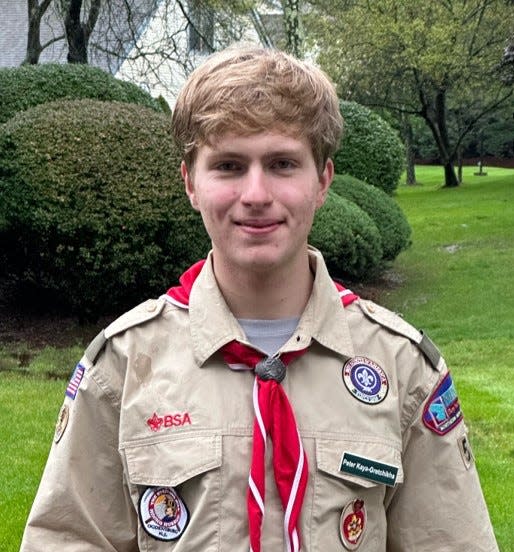
Boy Scout gets involved
Peter, a senior at Mahwah High School from Troop 50, assembled a crew of 14 volunteers who spent more than 70 hours this summer restoring the site.
“Most Mahwah residents probably don’t know that slaves existed in Mahwah, and I hope my project can spread awareness about Mahwah’s past,” Peter said.
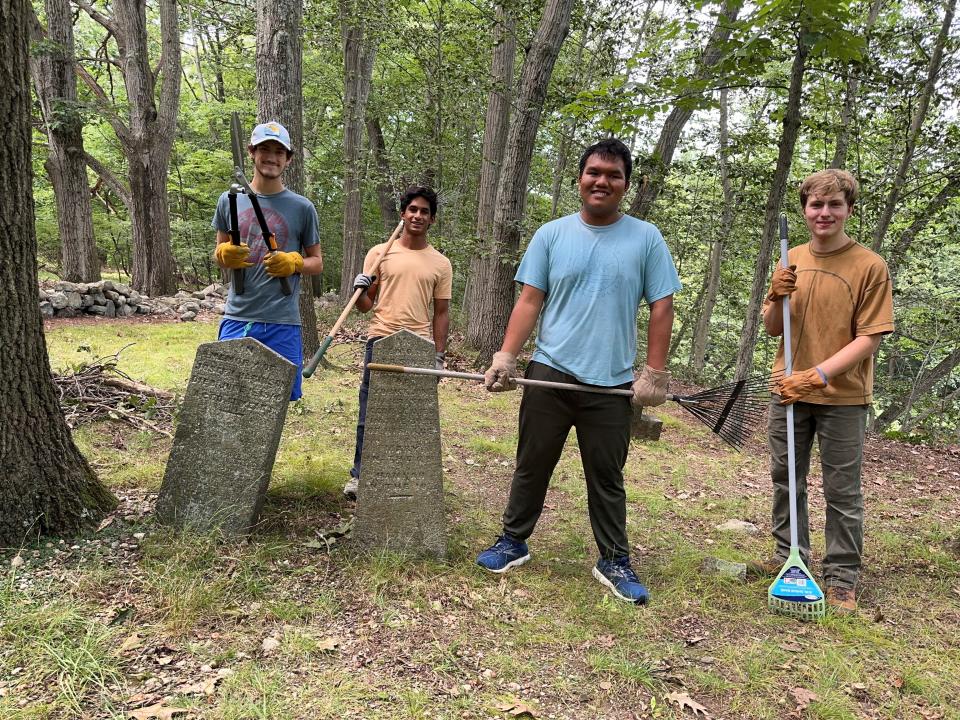
Among Peter's recruits was Michael Kolenut of Lincoln Landscaping, who helped clear a path to the site and advised on how to remove brush without damaging the gravestones.
NJ SLAVE CEMETERIES More historic burial grounds for African Americans discovered in New Jersey
“This ground is where men and women have worked their whole lives only to be buried behind the white cemetery with a simple boulder to mark their lives," Kolenut said. "I was proud to work with Peter cleaning up the area."
As a final step, Peter documented the surviving stones and made a map of the area. However, Powley said, the group is not ready to share the map with the public.
BERGENFIELD SLAVE CEMETERY Local group brings Bergenfield cemetery site back to life for Juneteenth weekend event
“We have been hesitant to publicize this project because it is a sensitive site and we don’t want to risk it being damaged,” Powley said. "It is not easy to access. While the cemetery itself is not owned by Ramapo College, one would have to cross college property to access it."
Powley thanked Ramapo College officials, saying they have been "very supportive of this restoration, allowing the volunteers and contractors to access the site."
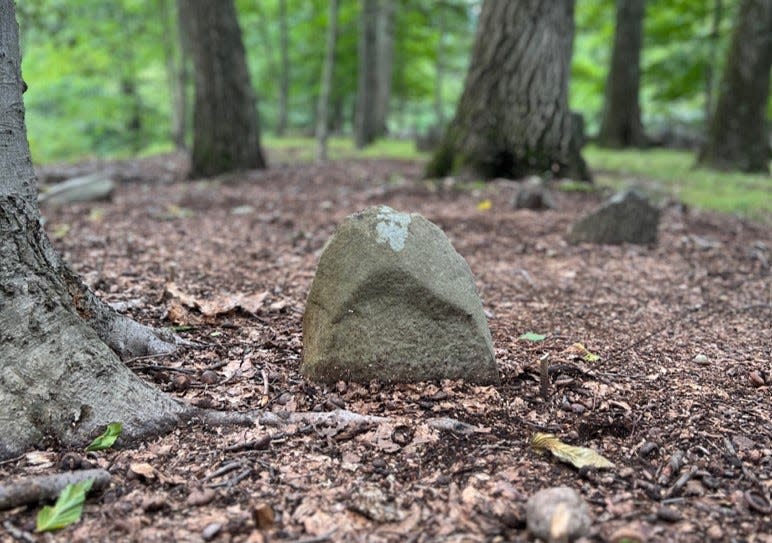
In 1800, 20% of Bergen County's population were slaves, the highest of any New Jersey county. By 1830, two-thirds of the remaining slaves in northern states were in New Jersey.
The Mahwah Township Historic Preservation Commission is an 11-member volunteer board appointed by the mayor to protect the community's architectural, archaeological and cultural heritage by preserving historic cemeteries, objects, sites and structures. For more information, visit mahwahtwp,org or follow on Facebook.
This article originally appeared on NorthJersey.com: Scout helps preservation group restore slave cemetery in Mahwah

